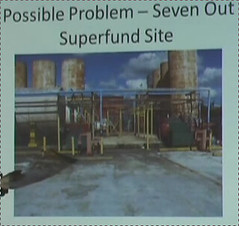Do we want to risk Sabal Trail’s fracked methane pipeline blowing out
under the Suwannee or Withlacoochee Rivers like
 Spectra’s Texas Eastern Pipeline blew out under the Arkansas River in May?
WWALS doesn’t, which is why we filed the
petition to Florida’s Department of Environmental Protection
asking them not to issue a permit for Sabal Trail.
Spectra’s Texas Eastern Pipeline blew out under the Arkansas River in May?
WWALS doesn’t, which is why we filed the
petition to Florida’s Department of Environmental Protection
asking them not to issue a permit for Sabal Trail.
The Little Rock blowout is one of several recent Spectra incidents Dan Christensen finds today in FloridaBulldog.org, Pipeline company with tie to Gov. Scott, and state backing, has history of accidents, Continue reading










